Your kids will be amazed at the effect of hot and cold water on a balloon in this easy and simple Hot and Cold Balloon Science Experiment.
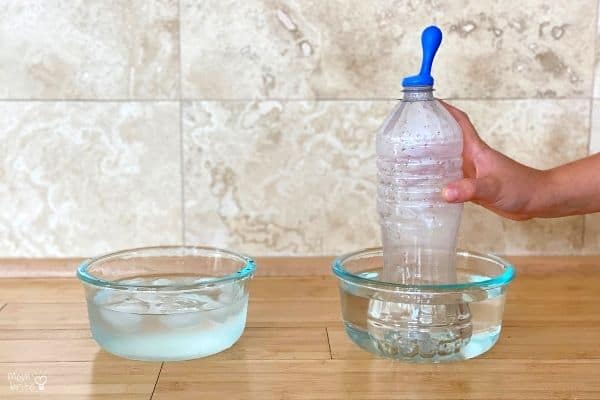
In the tornado formation experiment, we discover that warm air rises and cold air sinks. The reason is that warm air is less dense, and therefore it floats above the cold air.
Naturally, my kids ask, “why is the cold air denser than warm air?”
There is no end to their curiosity, and I am rather thankful for it! This is how little engineers and scientists are created!
As the air warms, the molecules move faster and further apart. As a result, air expands and becomes less dense.
We can see the effect of heating up the air with this simple hot and cold balloon experiment. Your kids will love watching the balloon blow up and shrink by placing it in hot and cold water!
How to Inflate a Balloon with Hot Air
Materials:
- Water
- Ice cubes
- 2 containers
- Empty water bottle
- Balloon
Instructions:
1. Blow up the balloon a few times to stretch it. It will help the balloon inflate with the hot air.
2. Pour water in one container and add ice cubes.
3. Pour hot water into the other container. The water doesn’t have to be boiling, just hot from the tap.
4. Place the opening of the balloon over the mouth of the empty water bottle.
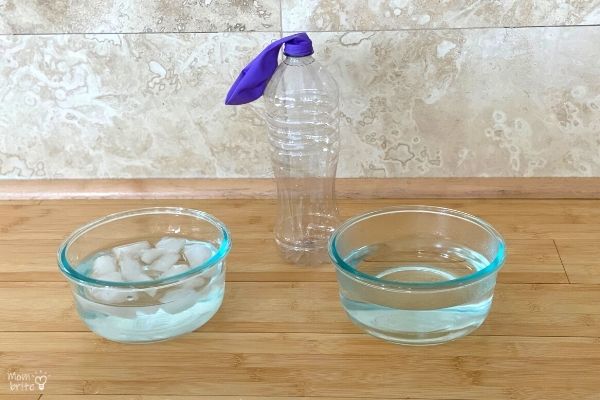
5. Place the water bottle in the hot water. Watch the balloon inflate!
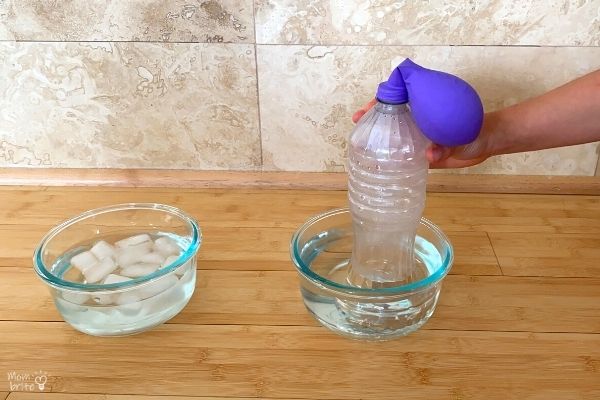
6. Place the water bottle in the cold water. What happens to the balloon?
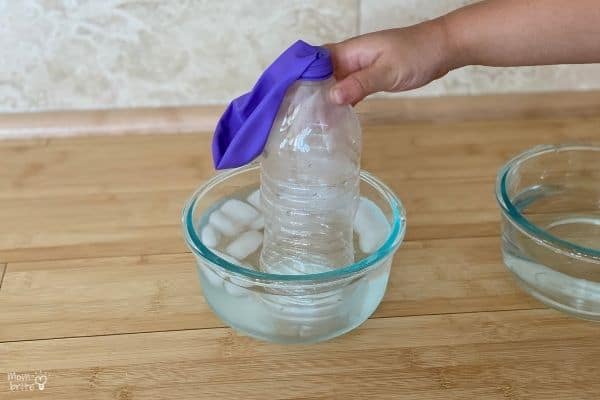
This science experiment is easy to set up and plenty of fun for the kids. They were so surprised when the balloon first inflated when we placed the bottle in hot water!
We tried both using a regular balloon and a water balloon. While both balloons inflated, the water balloon stood straight up while inflated due to its small size.
You can use either to demonstrate how the warm air expands inside the bottle and blow up the balloon. Why not try different types of balloons just for fun?
The Science Behind the Balloon in Hot and Cold Water Experiment
I think of the air molecules as excited children. When the bottle is submerged in hot water, the air molecules inside get more and more energy and start to bounce everywhere – into each other, into the wall of the bottle, and the inside of the balloon.
As the result, the air expands and the balloon inflates!

Then we saw how the balloon quickly deflated when we place the bottle in the cold water. The air molecules when cooled contracted, took up less space, and the balloon collapsed.
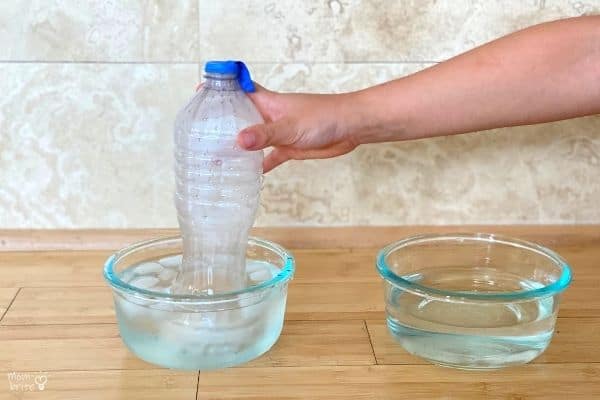
The beauty of this experiment is that you can do it over and over again! Just add more ice cubes if all of them melted, and heat up more water once the warm water cools.
You can also try different water temperatures to test the effect of the temperature of the water on how big the balloon gets. Try and find out what’s the lowest water temperature necessary to cause the balloon to inflate.
To understand more about how air behaves, make sure you check out the warm air rises, cold air sinks experiment.
Then head over to the tornado in a bottle and cloud in a jar experiment to learn more about the effect of air on the weather!
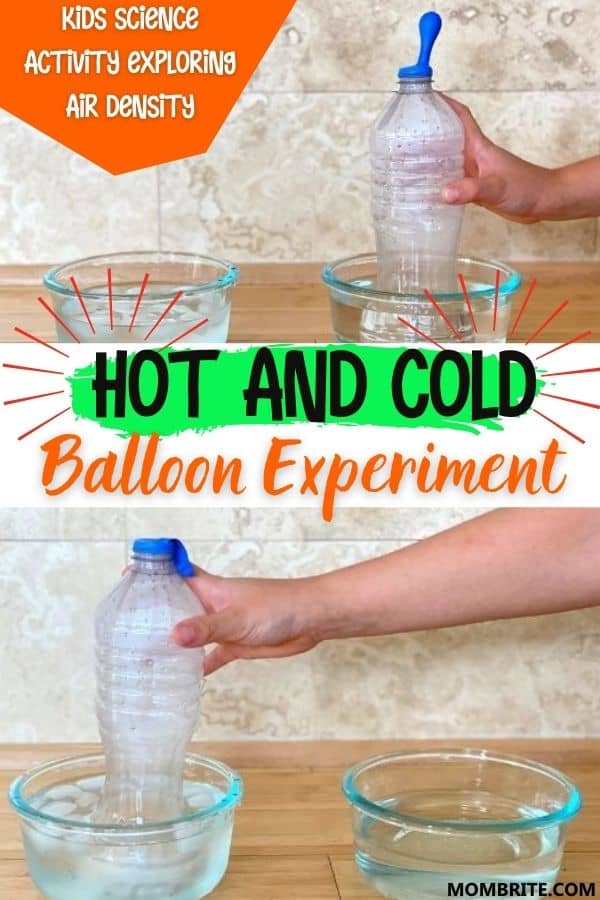

Wow it was great even to me as a teacher. I learn and experience. Also my little ones enjoy it.
That’s the great part about these experiments, I feel like I am learning lots too! So fun!
wow that’s neat